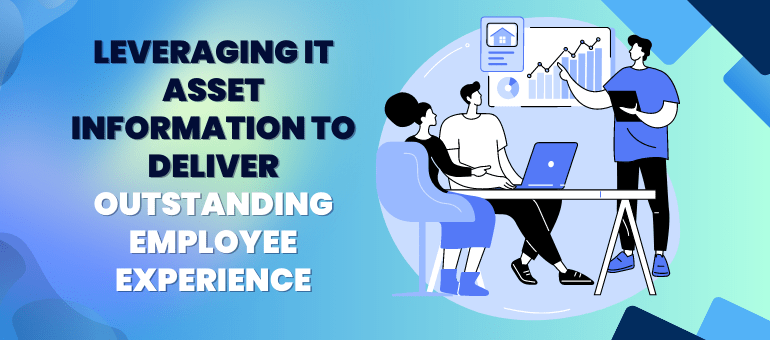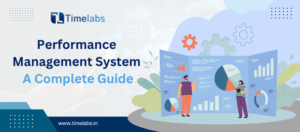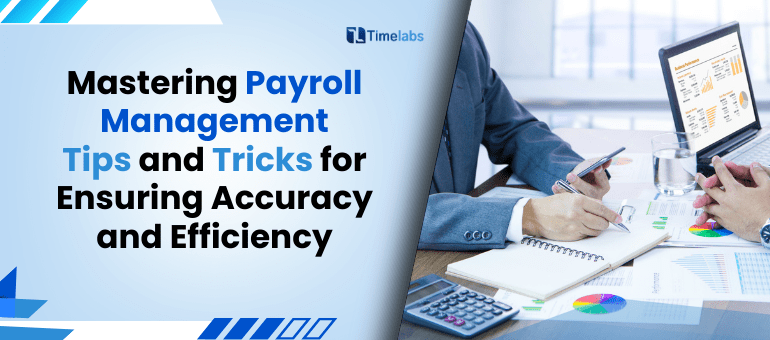Today’s businesses emphasize the value of delivering excellent employee experiences to attract and retain top talent. An important part of creating a positive employee experience is the right management of IT assets. By leveraging various IT assets, businesses can increase productivity, streamline various support services and optimize workflows. Have a look at some of the benefits of leveraging IT asset information for delivering a great employee experience:
We are listing six benefits for the readers so that they can understand the importance of IT asset information in delivering a satisfying employee experience.
1. Increasing Asset Visibility
The first step toward efficiently administering an organization’s information technology (IT) assets is a thorough understanding of its technological landscape. Organizations employing effective asset management systems can maintain accurate and current information on their hardware, software, and licensing. Additionally, leveraging asset information enables organizations to plan for technology upgrades and ensure employees have access to the latest tools and technologies, enhancing their productivity and keeping them up-to-date with industry advancements.
2. Streamlining the Onboarding and Offboarding Processes
Employees will have several significant touchpoints during their employment with a company, including onboarding and offboarding. Businesses can streamline these procedures by using software like HRMS and ensuring new hires have immediate access to all necessary tools and resources. Automating workflows for provisioning and de-provisioning based on asset data decreases the risk of errors, administrators have less work to do, and the onboarding and the offboarding process is sped up. To guarantee a smooth transition for both sets of employees, the onboarding processes for new hires and offboarding procedures for departing employees are crucial.
3. Quick ticket resolution procedure
When you combine information about your assets with your service management platform, your service desk will have immediate access to all insights into the likely causes of problems and the remedies to those problems. These insights will cover usage details, performance information, and status updates on warranties and licenses. To create an environment that leads to a better employee experience, you must be able to get to the root of the problem.
You can proactively support your users since you can continuously monitor your assets. This helps your team to spot problems and fix them before they affect end customers. Personnel could better utilize the time spent filling out ticket requests by planning or working on important projects for the company. According to recent studies, it might take staff up to twenty minutes to refocus on their tasks after a problem has been resolved. You might recoup hundreds or even thousands of hours of lost production if you applied this method to all your teams.
A strong management tool for IT assets has to offer greater visibility in addition to contextual data. If your IT team has access to a data-driven, proactive support solution, they can fend off possible threats even before a support ticket is sent to them.
4. Proactive support
The maintenance of a productive workplace necessitates the prompt supply of support and the resolution of issues. If businesses leverage the knowledge about their IT assets, they can create proactive support programs. Asset data analysis can identify trends, forecast potential issues, and identify remedies before they impact staff. The amount of downtime is decreased because of this proactive approach to support, which also shows a commitment to the staff members’ pleasure and well-being.
Once you have linked your asset data with the service management platform, the HR department can provide great proactive support to the users. Regular asset monitoring allows users to resolve their queries before the end user finds them. It eliminates the requirement of raising the ticket.
5. Improving Asset Lifecycle Management
The effective and economical use of the technological resources at hand is ensured by efficient asset management throughout their existence. Making informed decisions about the purchase, use, and retirement of IT assets allows an organization to use the data about that organization’s IT assets. To reduce costs and enhance resource allocation, it may be possible to locate assets that are not used to their fullest extent or have become obsolete by looking at asset data. Additionally, by ensuring they have the most recent information, businesses may use asset information to plan for technology changes and ensure that personnel can access the newest tools and technologies.
6. Compliance and Safety
Businesses must adhere to industry standards and maintain the security of their information technology environments. When businesses apply their knowledge of IT assets, they may put strict security measures in place and preserve compliance. Reputed HR software can help you keep everything on track and send notifications when required. This proactive strategy increases employee trust and confidence since they know their data and information are protected. Employing well-known HRMS software can help the employees and management in streamlining all the information.
In Conclusion
To recruit and retain the best employees, businesses must give the employee experience top attention in today’s fiercely competitive environment. Adopting a tech-aligned strategic approach here enables organizations to enhance workflows, customize their interactions with technology, and deliver first-rate support services. Increasing asset visibility, enhancing onboarding and offboarding procedures, providing personalized technical experiences, enabling proactive support, optimizing asset lifecycle management, and ensuring security and compliance may all help a business create an excellent employee experience. Adopting these techniques would boost employee satisfaction and productivity while promoting business success in the hyper-connected digital world.



